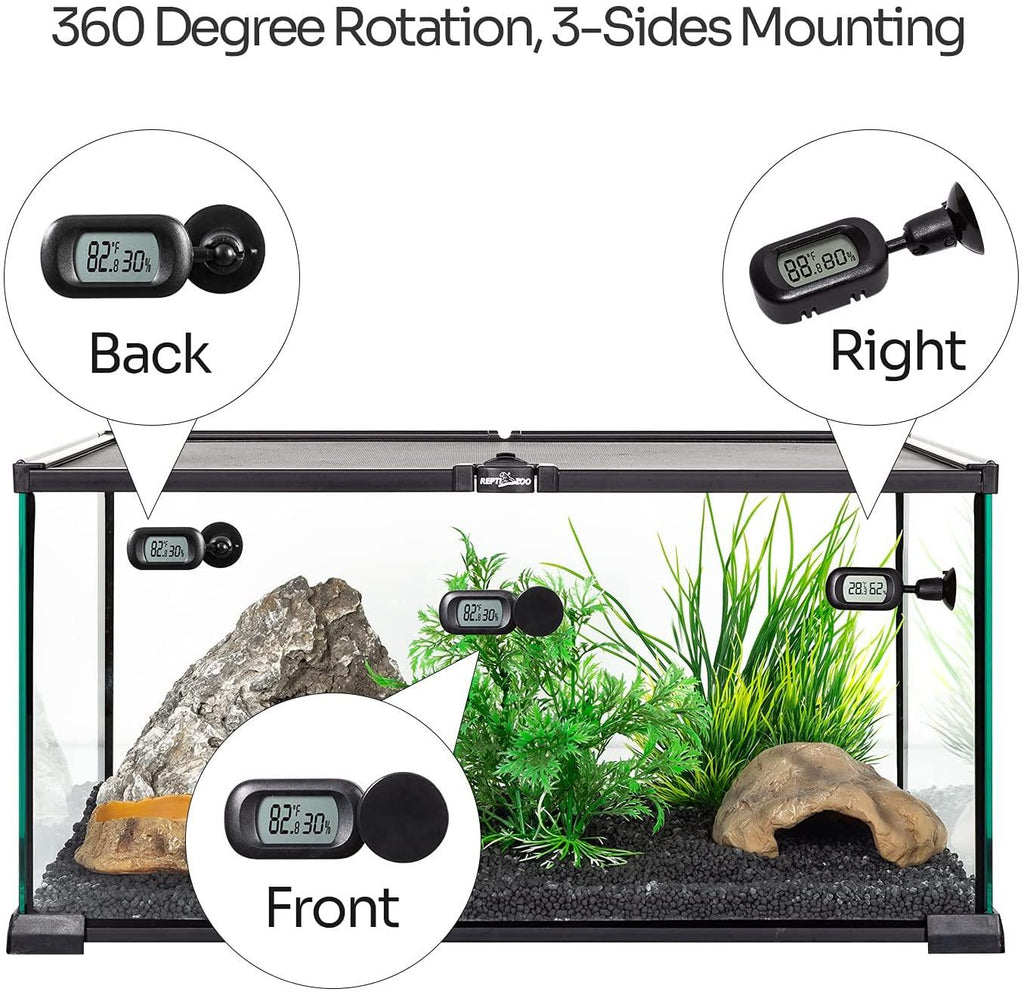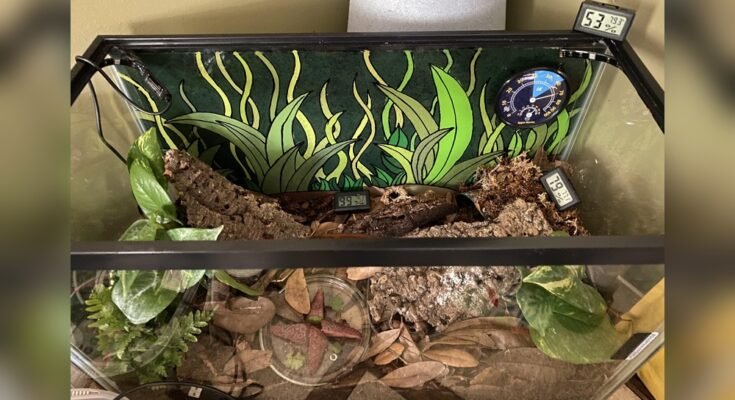Are you struggling to keep your home’s humidity just right? Knowing exactly where to place a hygrometer can make all the difference.
If you put it in the wrong spot, you might get false readings that lead to uncomfortable air or even damage to your walls and belongings. But don’t worry—this guide will show you the best places to put your hygrometer so you can protect your space and breathe easier.
Keep reading to discover simple tips that will help you get the most accurate humidity readings every time.

Credit: www.reddit.com
Ideal Locations For Hygrometers
Choosing the right place for a hygrometer is key to getting accurate readings. Placing it in the best spot helps track humidity levels effectively. This guide covers where to put your hygrometer for the most reliable results.
Indoor Placement Tips
Place the hygrometer in rooms where humidity matters most. Living rooms, bedrooms, and kitchens are good choices. Keep it away from direct sunlight or heat sources like radiators. Walls inside the room work better than outside walls. Place it at eye level for easy reading.
Outdoor Placement Considerations
Use a weatherproof hygrometer for outdoor use. Put it in a shaded area to avoid sun exposure. Mount it away from rain or water splashes. Avoid spots near trees or plants that release moisture. A well-ventilated area gives the best air flow for accuracy.
Avoiding Common Placement Mistakes
Do not place the hygrometer near windows or doors that open often. Avoid putting it near vents, fans, or humidifiers. Do not place it on the floor or too close to the ceiling. Keep it away from kitchens and bathrooms if possible. These spots can give false humidity readings.
Factors Influencing Hygrometer Accuracy
Understanding factors that affect hygrometer accuracy helps place it correctly. Hygrometers measure humidity, but many conditions can change their readings. Correct placement ensures reliable data and better humidity control.
Temperature Effects
Temperature changes can make a hygrometer show wrong numbers. Sudden heat or cold affects its sensor and causes errors. Place the hygrometer where temperature stays steady for best results.
Airflow And Ventilation
Strong airflow can dry or moisten the sensor quickly. This creates false humidity readings that do not reflect the room. Keep the hygrometer away from vents, fans, or windows that blow air.
Sunlight Exposure
Direct sunlight heats the sensor and shifts readings upward. The sunlight also causes moisture to evaporate near the device. Use a shaded spot to keep sunlight from touching the hygrometer.
Room-specific Placement Advice
Placing a hygrometer in the right room spot helps get accurate humidity readings. Each room has unique needs and challenges. Correct placement keeps the device working well and your air comfortable.
Check the spots that best represent the room’s air conditions. Avoid direct sunlight, vents, or areas near windows and doors. These spots can give false readings and confuse your humidity control efforts.
Living Room And Bedrooms
Place the hygrometer at eye level on an interior wall. Keep it away from heaters, air conditioners, and fireplaces. Avoid corners, as air circulation is lower there.
Choose a central location in the room. This spot gives a good average of the room’s humidity. It helps keep everyone comfortable while sleeping or relaxing.
Bathrooms And Kitchens
Bathrooms and kitchens have high moisture. Place the hygrometer away from showers, sinks, and stoves. These areas have spikes in humidity that can mislead the device.
Mount the device on a wall opposite the main source of steam. Keep it high enough to avoid splashes but low enough to read easily. This placement tracks overall room moisture well.
Basements And Attics
Basements and attics often have moisture problems. Place the hygrometer where air flows freely. Avoid corners or spots near water pipes and vents.
Keep the device off the floor in basements. In attics, avoid placing it near roof vents. Proper placement helps detect humidity issues early and protect your home.

Credit: reptizoo.store
Types Of Hygrometers And Placement Needs
Choosing the right hygrometer depends on the type and where you place it. Each type has its own needs and best spots for accurate readings. The environment and the device style affect how well it works. Knowing these differences helps keep humidity levels just right.
Digital Vs Analog Hygrometers
Digital hygrometers show numbers on a screen. They give quick and clear humidity readings. Place them in areas with stable temperatures for best results. Avoid direct sunlight or near heat sources. Analog hygrometers have a dial and needle. They need a spot where air flows freely. Keep them away from walls and corners to avoid false readings.
Wireless And Smart Hygrometers
Wireless hygrometers send data to phones or computers. They work well in rooms you do not visit often. Place them where they can connect to Wi-Fi easily. Smart models can alert you about humidity changes. Put them in basements, greenhouses, or storage areas. These devices help track moisture over time without constant checking.
Specialized Hygrometers For Humidity Control
Specialized hygrometers are made for certain places. Some are for saunas, others for museums or labs. They often require precise placement to measure humidity correctly. Place them where air circulates but is protected from splashes or dust. These devices help maintain safe and stable humidity levels in sensitive areas.
Maintenance And Calibration Tips
Maintaining and calibrating your hygrometer ensures accurate humidity readings. Proper care helps the device last longer and perform well. Simple steps keep your hygrometer reliable for daily use.
Regular Cleaning
Dust and dirt can affect your hygrometer’s sensor. Use a soft, dry cloth to wipe the surface often. Avoid water or cleaning chemicals. Clean the device gently to prevent damage.
Calibration Methods
Calibration checks if your hygrometer shows the right humidity. One easy way is the salt test. Place the hygrometer in a sealed container with a small dish of salt and water. Wait 8 to 12 hours. The reading should be about 75% humidity. Adjust the device if needed, following the manual instructions.
When To Replace Your Hygrometer
Replace the hygrometer if it shows wrong readings after calibration. If the device breaks or the sensor stops working, buy a new one. Old hygrometers lose accuracy over time. Regular checks help you decide when to replace it.

Credit: buythermopro.com
Frequently Asked Questions
Where Is The Best Spot To Place A Hygrometer Indoors?
Place your hygrometer at eye level in a central room. Avoid direct sunlight and drafts for accurate readings. Keep it away from kitchens or bathrooms where humidity fluctuates frequently.
Can I Put A Hygrometer Near A Window?
Avoid placing a hygrometer near windows. Sunlight and external air affect humidity readings. For precise monitoring, choose an interior wall away from heat or cold sources.
How High Should I Mount My Hygrometer?
Mount your hygrometer about 5 feet above the floor. This height reflects average breathing zone humidity. Avoid placing it too low or high for consistent measurements.
Should A Hygrometer Be Placed In A Humid Or Dry Area?
Place your hygrometer where you want to monitor average humidity. Avoid extreme wet or dry spots. This ensures it gives a representative humidity level of your living space.
Conclusion
Placing a hygrometer in the right spot helps you track humidity well. Avoid direct sunlight and drafty areas for best results. Keep it at eye level for easy reading every day. This simple step protects your home and health. Use the tips shared to find the perfect place.
Check your hygrometer often to stay informed. Small actions bring big comfort.



